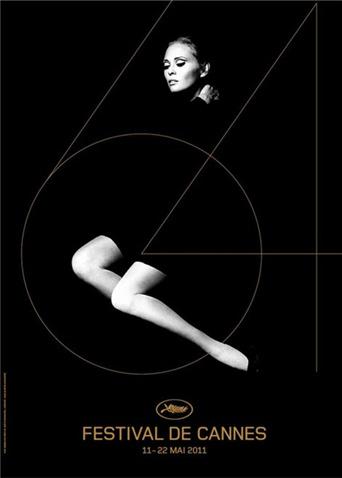欢迎大家加入全美超模小站!亚洲!!http://site.douban.com/165095/
欢迎大家加入全美超模小站!亚洲!!http://site.douban.com/165095/
回复 :《新相亲大会》第三季本周日归来 规则升级,新增“亲家宣言”被观众封为“上头节目”的江苏卫视情感新王牌《新相亲大会》第三季,即将于2020年1月5日(本周日)21:10回归。对于一档现象级、做到第三季的季播相 亲节目来说,持续升级是一件不容易的事。2019年年初,《新相亲大会》登陆江苏卫视周日晚间黄金档,与每周六晚间播出的《非诚勿扰》形成“双拳出击”之势。节目第一季平均收视率1.08%,囊括周日同时段收视冠军、上半年新节目收视冠军及婚恋情感类节目收视冠军“三冠王”;第二季又刷新自身纪录,平均收视率高达1.19%,蝉联周日同时段收视NO.1。本周,第三季就要以全新的模样和观众见面,节目制片人张红岩在接受采访时丝毫不见“题材倦怠”,新一季对部分规则和舞美视觉进行了全新升级,在调动相亲家庭的同时,对制作组也是一次再激活。有底气从成功中总结经验每一个规则的存在要有助于推动“有效碰撞“卫视周末综艺战场向来竞争激烈,2019年初,《新相亲大会》以“素人节目”之姿被布局到周日晚间黄金档,足见江苏卫视在情感类节目领域的底气。成绩也确实不负众望,两季下来,《新相亲大会》牢牢占据周日晚间综艺王者位置,除了平均收视率节节攀升,在头部明星综艺扎堆的周末,节目所发酵的相亲话题脱颖而出,微博#新相亲大会#话题阅读量5.2亿,百万级话题38个,登上热搜30+次,被观众封为“长在热搜上的素人综艺”。既然具有足够的独特性和稀缺性,节目有必要在成熟、稳定的内容结构上再做突破吗?在张红岩看来,这个答案是肯定的。“当然,如果我们不做改变,观众会不会审美疲劳?从第二季收视率比前一季更进一步,以及观众和网友对节目话题的参与热情来看,我们对‘新相亲’的内容是有自信的。”之所以要在第三季跨出“改变”一步,主要来自节目团队对现有规则的升级思考。区别于只有单身男女在场的相亲综艺,“新相亲”模式的核心要点,在于将父母引入子女相亲的特殊场景之中。经过两季的制作磨合,节目团队发现,有些规则应该做适当调整,“节目里环节和规则的设计,要有助于催化子女和父母、家庭与家庭的有效沟通。我们希望,从这档节目里,能让大家真切看到不同家庭对于婚恋择偶的最真实想法。”首度调整规则,升级细节抢先看加大单人嘉宾和单人家庭话语权,让家庭间的表达更直接坚定了要改的决心,接下来的问题就是怎么改、改哪里。其实,在第二季节目的录制中,节目团队就渐渐察觉到,场上单人家庭的呈现有些“单薄”,尤其相比对面组团“来战”的六个家庭,单人嘉宾的父母没有那么多的表达机会,除了帮助子女选择“心动家庭”之外,更多时间里,他们只能在儿女身后充当“精神助攻”,而无法表达更多对于子女择偶的看法。因此,第三季节目首当其冲的变化,就是增加“亲家宣言”环节。当单人嘉宾出场后,将“选择心动家庭”改为“亲家宣言”,由其父母宣读对儿女择偶的期望,开门见山地表达对子女择偶的设想和要求。其次,增加单人嘉宾选择权,留灯数量由前两季的两盏改为三盏,终极选择环节的争夺人数增加。再次,增加单人家庭父母的甄选权,在单人嘉宾进入到终选时刻后,其父母将从三位候选嘉宾中选择一位直接淘汰,单人嘉宾可以听从父母建议,也可以直接表达反对。单就节目模式而言,这三项调整的幅度并不大,但两期录制下来,这些调整对整个节目进程和相亲故事走向,都起到了极大的激活效果。给予单人嘉宾父母“提要求”的机会,让亲家间的“过招”大大提前。而终选阶段的两个变化,增加单人嘉宾选择机会的同时,提升了代际间的择偶交锋,令结局走向更加难以预料。“终选环节留在台上的三个候选人,实际上涵盖了‘我喜欢的’、‘喜欢我的’和‘父母喜欢的’三种类型,当父母要淘汰的人与儿女喜欢的对象出现冲突时,父母和子女就多了一次开诚布公、心对心交流的机会。”首期节目本周日亮相男嘉宾分享成长故事用亲情感动全场都说,“爱是软肋,也是铠甲”,为了所爱的人,我们可以变得无坚不摧。在本周日《新相亲大会》第三季第一期节目中,男嘉宾们将用自己的成长故事,动情诠释何为“有了软肋的铠甲,将变得多坚强”。而“升级”为夫妻的男女嘉宾王逍、费滢梦将重新返场,拉升节目现场的甜度。第三季首期节目为女生家庭专场,三位男嘉宾将依次登台。1号男嘉宾钟涛坦言,过往感情和事业上的困境,并没有将自己击垮。而真正让他至今都无法释怀的,是父母的离异。舞台之上,钟涛提出了一个看似很简单的要求,他想要给父母一个拥抱。2号男嘉宾谢旸恺辅一登场,高大魁梧的身材、棱角分明的五官。节目中,他甚至表示自己的恋爱是分阶段的:第一阶段,先看外形;第二阶段,看性格,只有体贴又有趣的女生,我才会说出‘在一起’三个字。3号男嘉宾刘帅君光从“硬件”条件来看,几乎符合所有女生的择偶标准:长相阳光帅气、名校硕士毕业、稳定的工资和收入。但家庭的特殊情况,让刘帅君始终在感情道路上不敢迈步前行。刘帅君的父母并不富裕,家里还有一个“不太一样”的弟弟。这样的家庭环境,让刘帅君有着超出他年龄段许多的成熟和担当:大学打三份兼职,工作之后省吃俭用给弟弟买礼物;即便如今月薪过万,依然每个月坚持拿出其中的10%补贴家用。来到《新相亲大会》,刘帅君的择偶条件也非常简单,“我希望我的另一半,能理解我补贴家庭,照顾弟弟。这一辈子,只能我辛苦点儿了。”
回复 :日本东北地区的某座深山里,国中生小町在一间祭拜熊的神社中,担任巫女的重责大任。有一天,小町对监护人,也就是名为那津的熊说:“我想去念都市的高中。”为了能够让不经世事的小町,拥有在都市中生活的基本能力,那津展开了一连串的试炼,要求小町通过考验。
回复 :Global investigation to determine whether or not aliens have made contact here on Earth.全球调查,以确定外星人是否在地球上有过接触。,Contact Season 1 外星接触 第一季 播出时间S01Ep1 Alien Evidence 外星证据 2019年08月07日播出;S01Ep2 Declassified Breakthrough 解密突破 2019年08月14日播出;S01Ep3 Deep State 深层状态 2019年08月21日播出;S01Ep4 The Real Men in Black 真实的黑衣人 2019年08月28日播出;S01Ep5 Crash Landing 硬着陆物 2019年09月04日播出;S01Ep6 Anatomy of a Cover Up 解剖掩盖 2019年09月11日播出;S01Ep7 Fast Movers, Hostile Intent 行动迅速,怀有敌意 2019年09月18日播出;S01Ep8 Holy Grail Witness 圣杯见证人 2019年09月25日播出;,全8集,季终,等侍下一季出品!

